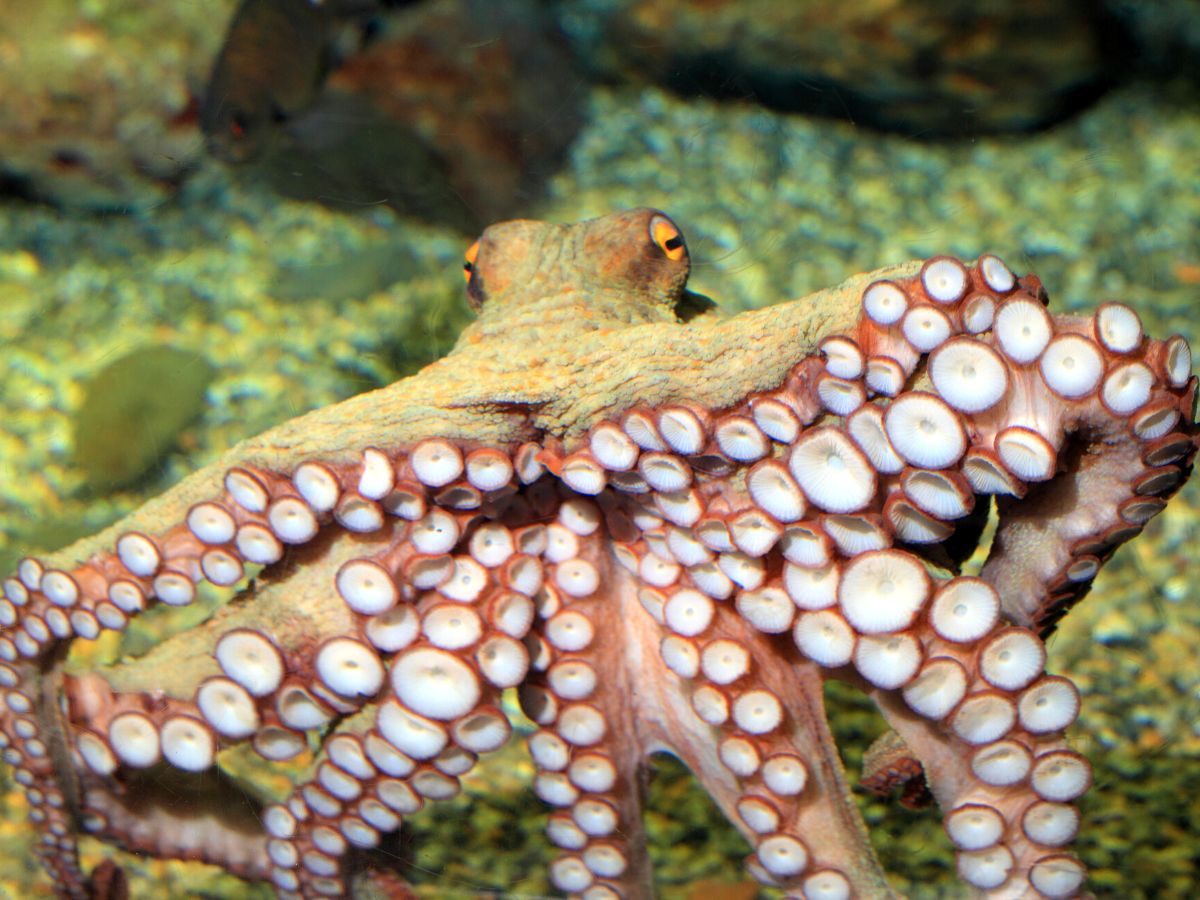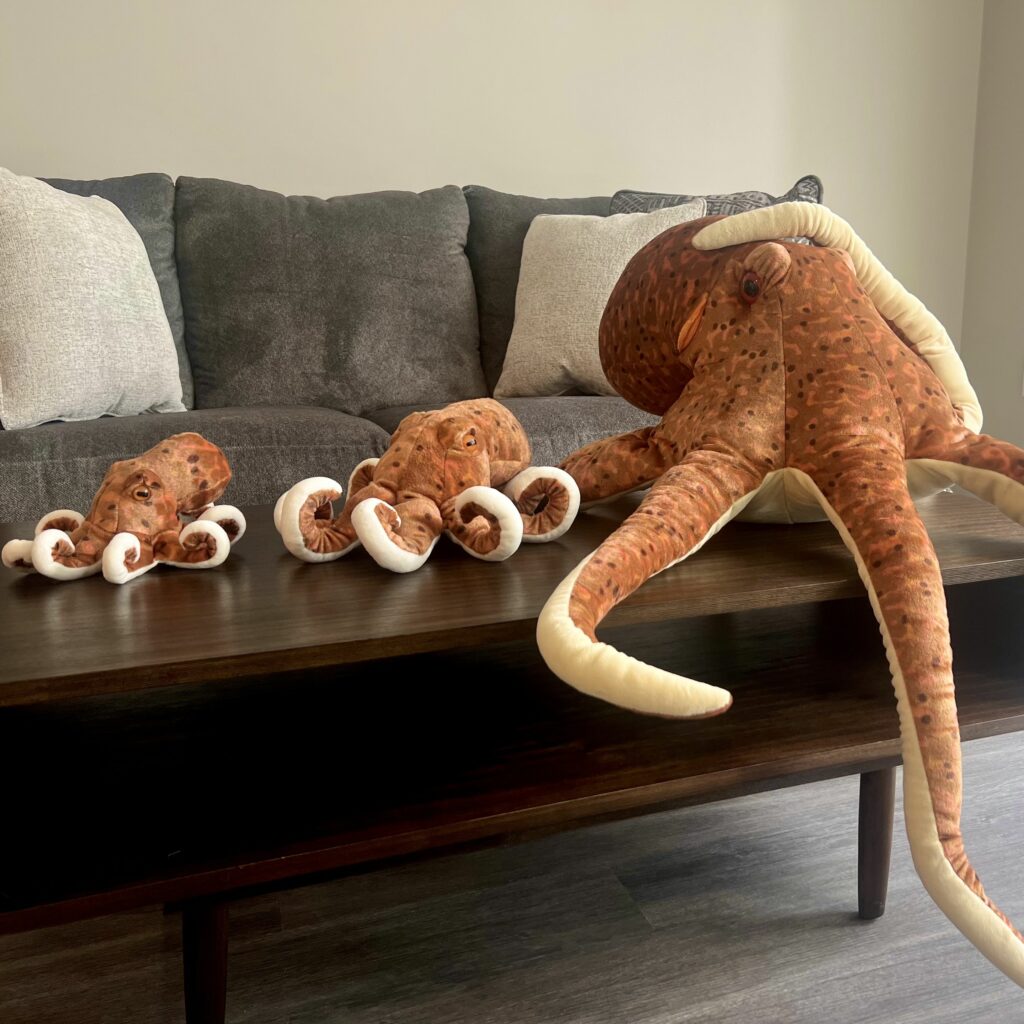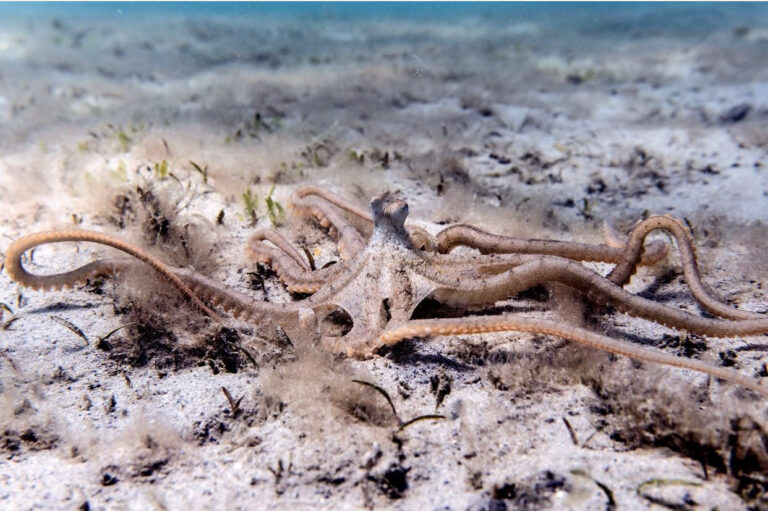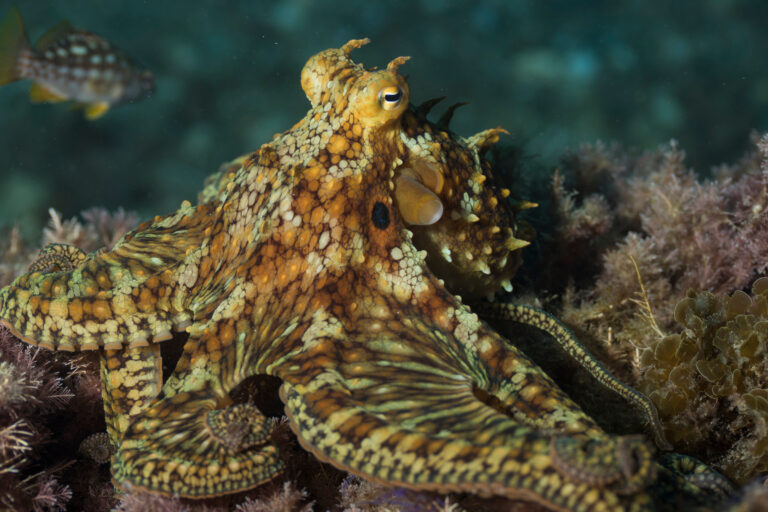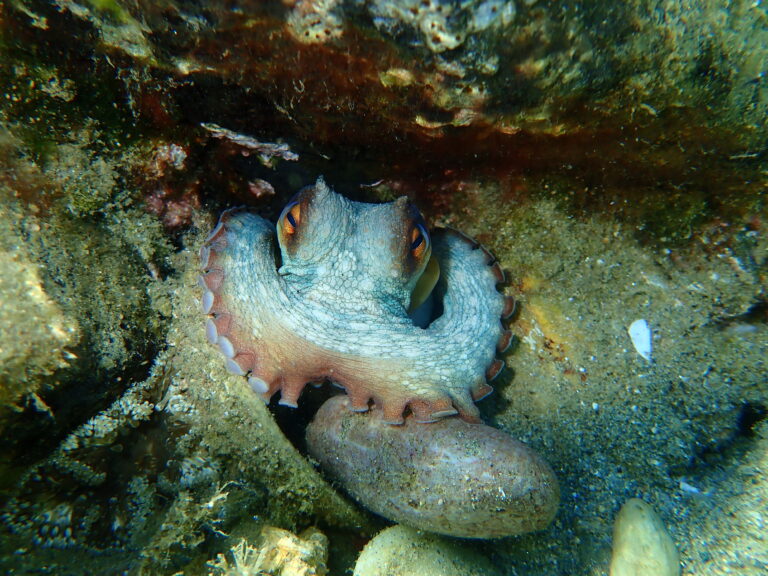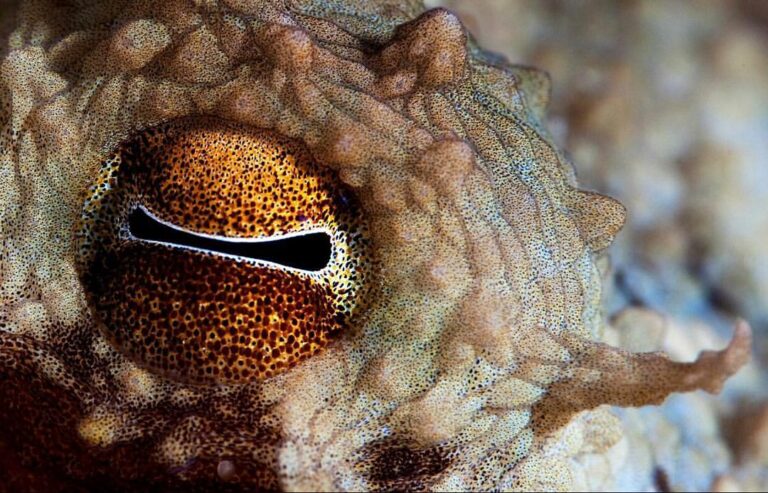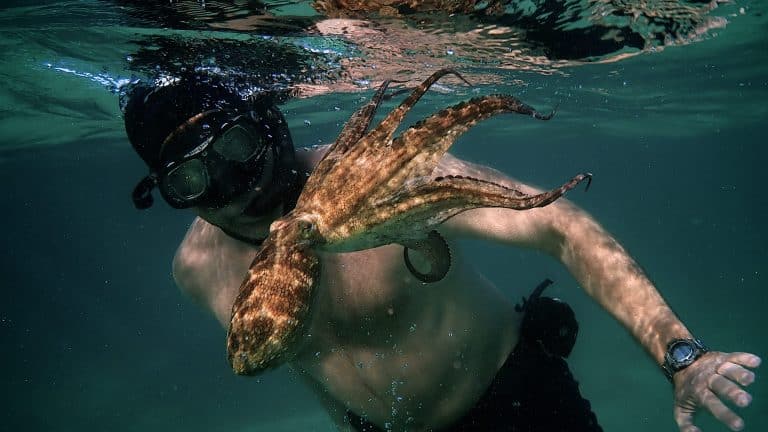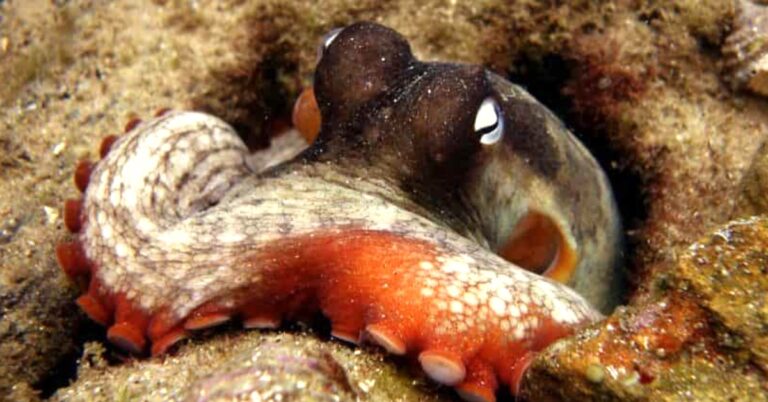Which Direction Is The Front Of An Octopus?
Sometimes it can be hard to tell where you stand with an octopus. Are you talking face-to-face, or are they giving you eight cold shoulders? The truth is actually somewhere in the middle! Keep reading to find out more about which direction is the front of an octopus.
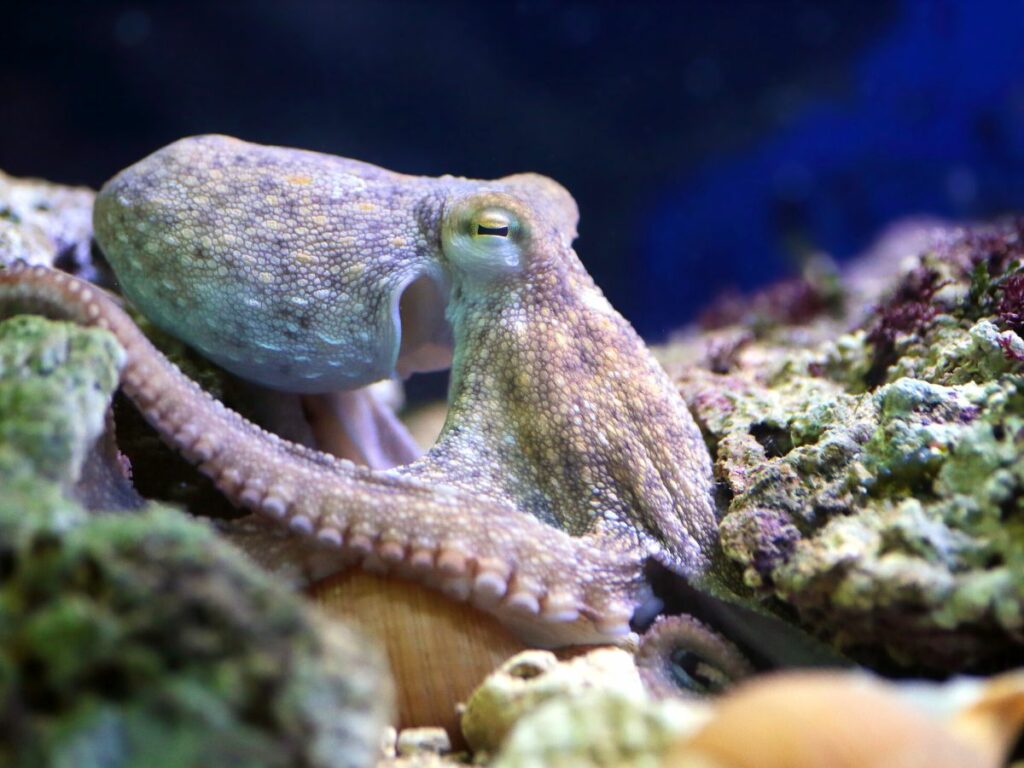
Between their donut-shaped brain and built-in water jets, it’s safe to say that an octopus’ body is more than a little wild. But with their almost saucer-like bodies, aspiring marine biologists will often wonder which end of the octopus is the front.
Well, wonder no more; we have an answer!
So… Which direction is the front of an octopus?
Like our own bodies, octopuses are built symmetrically. That means that an octopus’ left side and right side mirror one another.
If you were to fold an octopus in half like a sheet of paper, the left and right sides would match up perfectly. Humans have this, too! It’s called “bilateral symmetry.” To go back to the paper analogy, this means that our sides only match up if you were to fold us right down the middle between the eyes.
But an octopus isn’t just bilaterally symmetrical. If you flip an octopus upside down (after asking permission, of course), you’ll find its arms grow around its mouth in a radially symmetrical pattern, like a flower’s petals.
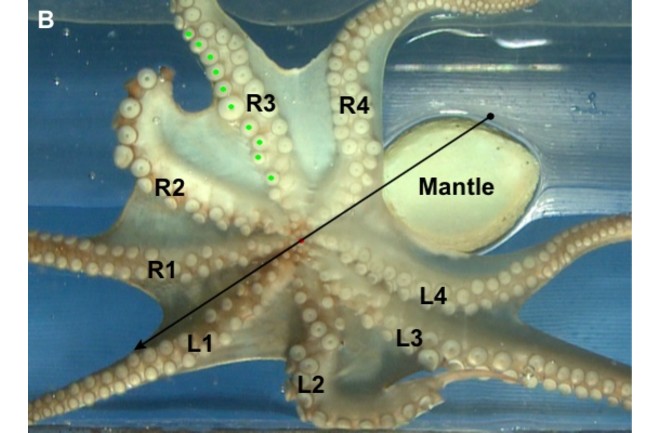
Lots of sealife is radially symmetrical, like jellyfish, sea urchins, anemones, and more. At first, this might seem like a strange way to build a body, but remember that in the ocean, anything can come at you from any angle.
So having arms that can operate in any direction can be the key to snagging food or avoiding predators.
Octopuses use their radially symmetrical bodies to give them superior control over their direction. Using their arms and specialized panoramic eyes, octopuses can crawl in any direction, forward, backward, left, or right, without changing body orientation!
Anterior vs. posterior
A big help in octopus orientation is its ability to see. But how does that help us figure out which end of the octopus is the front? Well, scientists count octopus legs in pairs. They call these groups of limbs “anterior” and “posterior”, meaning front and back.
So when they want to tell which side of an octopus is the front, they just find the “anterior” arms.
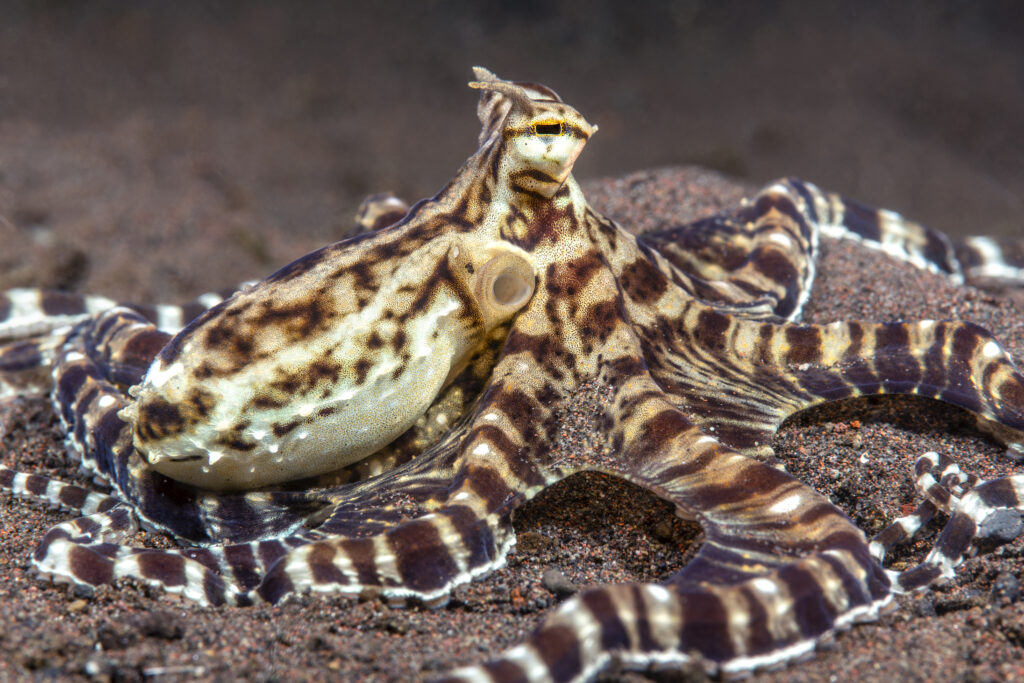
Is there an easier way to tell?
An easier way is to look at the octopus’ mantle. The mantle is that bulgy, squishy, wobbly-looking part of an octopus that looks kind of like a water balloon. That’s the back end, which means the opposite side is its front!
If you want to educate yourself some more about all sorts of different cephalopods, take a look at our encyclopedia. Or, what we call it, our Octopedia!
Connect with other octopus lovers via the OctoNation Facebook group, OctopusFanClub.com! Make sure to follow us on Facebook and Instagram to keep up to date with the conservation, education, and ongoing research of cephalopods.
✨Click here to Adopt an Octopus!✨
More FAQs To Read:
- Are Octopuses Dangerous?
- What Does An Octopus Feel Like?
- Do Octopus Have Tongues?
- Does An Octopus Have Arms Or Tentacles?
- Is There Such Things As A Freshwater Octopus?
